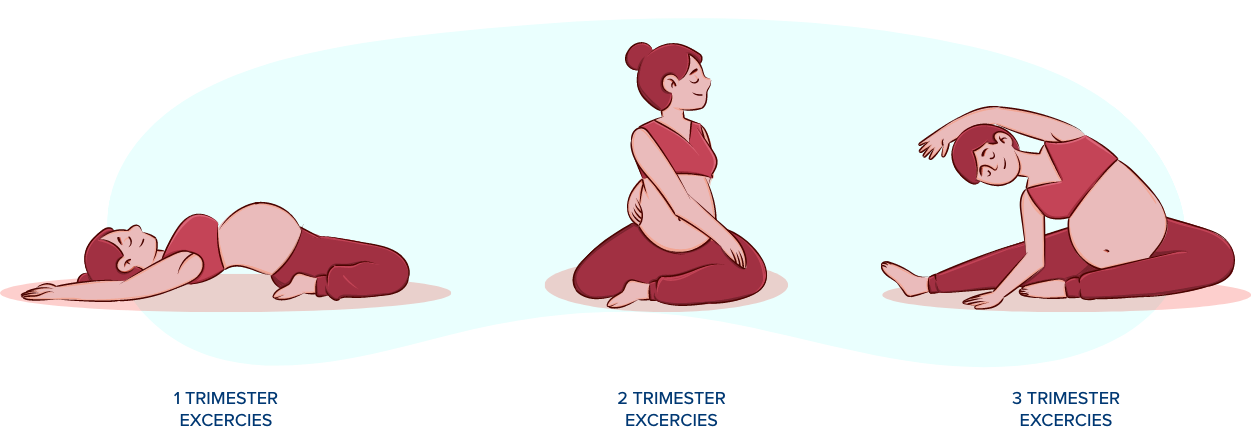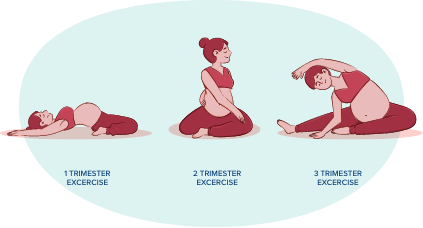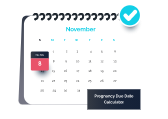





No lab centers are available in this city
Pregnancy is a remarkable journey filled with various stages of development for the growing baby. By the end of the second trimester, all of the baby's organs and body parts have formed and are functioning properly. Moving forward, the final phase of pregnancy is known as the third trimester. This begins around week 28 and lasts until the mother gives birth, typically around the 40th week. The third trimester can be challenging as the baby starts to occupy more space, leading to increased discomfort for the mother. Some common problems experienced by pregnant women during this time include shortness of breath, varicose veins, backaches, frequent urination, and heartburn.
During the third trimester, the fetus continues to grow in size and there’s fetal gain weight in accordance. It's an essential period for lung development as they mature further. Additionally, it begins to position itself head-down in preparation for birth. Towards the end of the third trimester, the baby measures approximately 19 to 21 inches in length and weighs an average of 2 to 3 kilograms. Here’s a brief description of fetal development during the third trimester:


During the third trimester of pregnancy, the baby's kidneys and lungs continue to develop and mature.
At this stage, the baby's sense of sight and hearing are also developing. They are gaining the ability to perceive light and sound in their environment.
The baby is covered in vernix caseosa, a creamy substance that acts as a protective coating on their delicate skin.
During the third trimester, fetal brain development continues to progress.
To allow for a smoother passage through the birth canal, the bones of the baby's skull remain soft and flexible during this stage.
During the third trimester, the baby also develops the ability to suck their thumb.
The growing fetus acquires the ability to cry, which is an important communication mechanism after birth.
What to Expect During the Third Trimester
The last few months of pregnancy can be quite tough for a woman, both physically and emotionally. Once she reaches week 37, the baby is considered full term, meaning that birth is imminent. During the third trimester, the woman may feel increased discomfort, aches, and swelling as she continues to carry her growing baby. It's normal for an expecting woman to start feeling anxious about the upcoming delivery.
During the third trimester of pregnancy, some other notable occurrences include:
The baby is incredibly active, with lots of noticeable movement.
Occasionally, the uterus will tighten randomly, resulting in what are known as Braxton-Hicks contractions. These contractions are typically not painful and can happen at any time without a predictable pattern.
There is often a frequent need to use the bathroom due to the development of the fetus in the third trimester and pressure on the bladder.
Many women experience heartburn.
Swelling can commonly occur in the ankles, fingers, or face during this stage of pregnancy.
Tender breasts that may leak a watery substance are preparing for breastfeeding.
Hemorrhoids
Difficulty sleeping is a common complaint during the third trimester. Physical discomfort, frequent bathroom trips, and a racing mind filled with thoughts about childbirth can all contribute to disrupted sleep.
Towards the end of the third trimester, fetal development undergoes several notable changes:
The baby now has eyelashes and eyebrows, adding to their facial features.
Some babies may have a full head of hair, while others may be bald at birth.
The nails have grown to the tips of the fingers and toes.
The white waxy substance (vernix) and fine hair (lanugo) that covered the baby's skin will begin to shed. The new mother might notice some of this leftover hair after the baby is born, but it usually disappears within the first few weeks of life.
Most babies naturally position themselves head-down in the uterus, with their head resting on the mother's pubic bone, in preparation for birth.
You can online book a blood lab test to ascertain pregnancy at a lab near you at the most competitive prices with Max Lab. Check the cost of the pregnancy test online, and what the sample collection will entail, and book an appointment with complete ease.
Foetal Development Benchmarks for the Third Trimester
As a woman’s pregnancy reaches its final stages, here's a breakdown of the changes happening to the baby during the third trimester:
Week 28: The baby's eyes can partially open, and they have developed eyelashes. The central nervous system is now capable of directing rhythmic breathing movements and controlling body temperature. At this point, the baby might measure around 10 inches long and weigh nearly 1 kg.
Week 29: The growing fetus is now able to kick, stretch, and make grasping movements.
Week 30: The baby's eyes can open wide, and they might have a decent growth of hair on the head by now. Red blood cells are forming in their bone marrow. At this stage, in the last trimester of pregnancy, the developing fetus can gain weight of nearly 1.2 kg and could be over 10 1/2 inches long.
Week 31: The baby has completed most of its major development and will now focus on rapid weight gain.
Week 32: The baby's toenails are visible, and the layer of soft hair (lanugo) that covers their skin starts to fall off. By now, the baby might weigh around 1.5 kg.
Week 33: The baby's pupils can change size in response to light, and their bones continue to harden. However, the skull remains soft and flexible.
Week 34: The fingernails have grown to reach their fingertips. By this stage, the baby could measure close to 12 inches long and weigh over 2 kg.
Week 35: The skin becomes smoother, and their limbs have a chubby appearance.
Week 36: The baby starts taking up most of the space in the amniotic sac, making their movements feel more like stretches and rolls.
Week 37: The baby gains a firm grasp, and their head might start descending into the mother’s pelvis in preparation for birth.
Week 38: The circumference of the baby's head and abdomen are about the same. Their toenails have reached the tips of their toes, while most of their lanugo has been shed.
Week 39: The baby's chest becomes more prominent, and for boys, the testes continue to descend into the scrotum. Fat is being added to keep the baby warm after birth.
Week 40: The expecting female’s due date has arrived, but keep in mind that healthy babies come in different sizes. On average, a baby might measure around 14 inches and weigh about 3.5 kg.
During the last trimester, the weight gain of the fetus is significant. As the baby grows and develops, their weight can increase by several grams, with rapid weight gain starting around week 31.

Get ready for your baby's arrival
Sign up takes less than 60 secs and gives you access to your offers, orders and lab tests.
Looks like you are not registered with us. Please Sign up to proceed
OTP will be sent to this number by SMS
We have successfully received your details. One of the agents will call you back soon.
 To reach our help desk call 9213188888
To reach our help desk call 9213188888
No Lab Centers are available in this city
Looks like you are not registered with us. Please Sign up to proceed
OTP will be sent to this number by SMS
Not Registered Yet? Signup now.Looks like you are not registered with us. Please Sign up to proceed





 7982100200
7982100200.png)